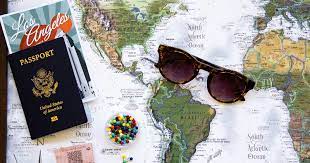Are you dreaming of embarking on a journey to the vibrant and diverse land of India? Well, get ready to dive into the enchanting world of Indian visas! With its rich history, stunning landscapes, and fascinating culture, India has become an increasingly popular destination for travelers from all corners of the globe. From exploring ancient temples in Varanasi to savoring mouth-watering street food in Delhi, there’s something for everyone. But before you pack your bags and set off on this adventure-filled expedition, it’s crucial to understand the different types of Indian visas available. Join us as we unravel this comprehensive guide that will equip you with all the essential knowledge you need to make your Indian dreams come true!
Introduction to Visas in India
India is a country with diverse cultures, stunning landscapes, and a rich history. It attracts millions of tourists every year, as well as students and professionals seeking work opportunities. If you are planning to visit India for any purpose, it is important to understand the visa requirements and application process beforehand.
A visa is an official document issued by the government of a country that allows individuals to enter, stay or leave that particular country for a specified period. In this section, we will provide an introduction to visas in India and discuss the different types available for visitors.
Types of Indian Visas
1) Tourist Visa – This type of visa is meant for individuals who want to visit India for tourism purposes such as sightseeing or visiting friends and family. It can be obtained for a maximum duration of 180 days with single or multiple entries depending on your nationality.
2) Business Visa – A business visa is required if you are traveling to India for business-related activities such as attending meetings, conferences or exploring potential investment opportunities. This type of visa can also be obtained for a maximum duration of 180 days with single or multiple entries.
3) Student Visa – Students who wish to study in India must apply for a student visa. This type of visa allows students to pursue their studies at recognized educational institutions in India. The duration of the student visa depends on the length of the course.
4) Employment Visa – Individuals seeking employment opportunities in India must obtain an employment visa before entering INDIAN VISA TYPES
Types of Indian Visas
India is a vast and diverse country, attracting millions of travelers from all around the world each year. From its vibrant culture to its rich history, there is no shortage of things to see and experience in India. However, before planning your trip to this fascinating country, it is important to understand the different types of visas available for foreigners.
- Tourist Visa:
The most commonly used visa for travelers visiting India for leisure or tourism purposes is the tourist visa. It allows visitors to stay in India for a maximum of 180 days and can be obtained either as a single-entry or multiple-entry visa. The validity of the tourist visa ranges from 3 months to 10 years, depending on the nationality of the traveler.
- Business Visa:
For those traveling to India for business purposes such as attending conferences, meetings with clients or exploring potential investments, a business visa is required. This type of visa also allows multiple entries into the country within its validity period.
- Student Visa:
Foreign nationals who wish to pursue their education in India are required to obtain a student visa. It allows students to study at any recognized educational institution in India for the duration of their course.
- Employment Visa:
This type of visa is issued to foreign nationals who have been offered employment by an Indian company or organization. To obtain this visa, one must have a valid job offer and meet certain qualifications set by the Indian government.
- Medical Visa:
For those seeking medical treatment in India, a medical visa isObtaining a tourist visa to India is the most common type of visa for individuals looking to visit the country for leisure purposes. It allows foreigners to stay in India for a period of up to 180 days and can be issued for single or multiple entries. In this section, we will discuss the different aspects of applying for an Indian tourist visa.
Types of Tourist Visas:
There are two types of tourist visas available for foreign nationals – e-Tourist Visa (eTV) and Regular Tourist Visa. The e-Tourist Visa is an online application system that allows citizens from over 160 countries to get a visa quickly and easily without having to go through the traditional process. This type of visa is valid for a maximum stay of 60 days, with double entry permitted, and can only be obtained twice in one calendar year.
On the other hand, the Regular Tourist Visa requires applicants to submit their application at an Indian embassy or consulate in their home country. This type of visa allows visitors to stay in India for up to six months with multiple entries permitted. However, it may take longer processing time compared to eTV.

